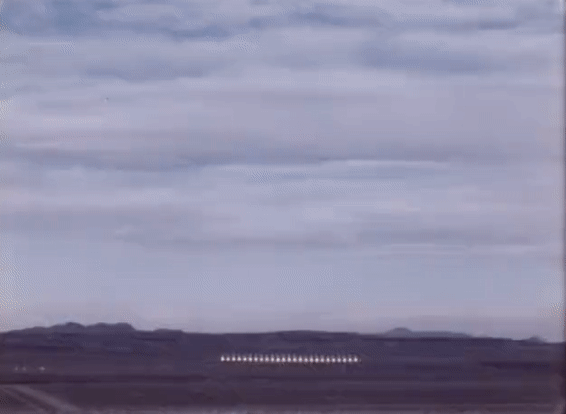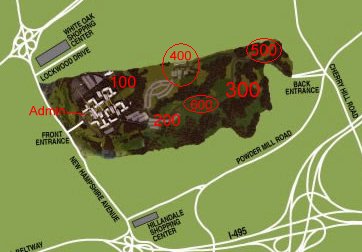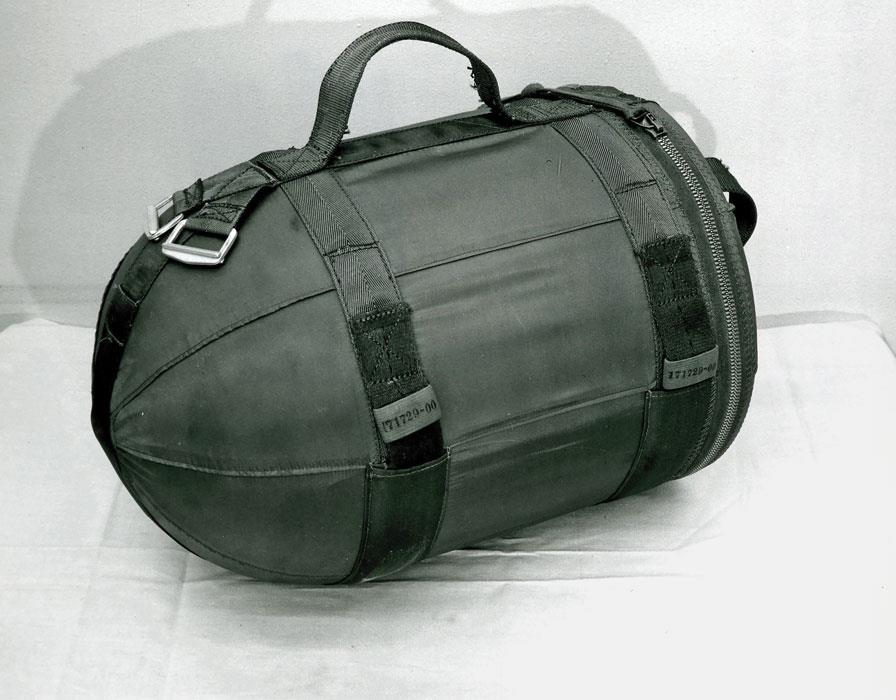|
W58
The W58 was an American thermonuclear warhead used on the Polaris A-3 submarine-launched ballistic missile. Three W58 warheads were fitted as multiple warheads on each Polaris A-3 missile. The W58 was in diameter and long, and weighed . The yield was . The warhead used the Kinglet primary, which it shared with the W55 and W47 warheads. The W58 design entered service in 1964 and the last models were retired in 1982 with the last Polaris missiles. History The W58 program began in mid-1959 when concerns were raised that enemy defensive capability was increasing due to improved detection capabilities. A study into the problem was conducted and its report released in August 1959 which recommended the development of a cluster warhead system for missile. In November 1959, a follow-up study into the feasibility of a cluster warhead for the Polaris missile began and its report was submitted in January 1960. The report recommended the development of a missile carrying three warhe ... [...More Info...] [...Related Items...] OR: [Wikipedia] [Google] [Baidu] |
Kinglet (nuclear Primary)
Kinglet was a boosted fission primary used in several American thermonuclear weapons. The W55 warhead for the UUM-44 SUBROC anti-submarine missile and the W58 warhead for Polaris A-3 were designed to use Kinglet, while the W47 warhead for Polaris A-1/A-2 were retrofitted with Kinglet to overcome the technical issues with the Robin primary the W47 was initially deployed with. Allegedly, only the W47Y2 was converted to the Mod 3 design using Kinglet. Design The Kinglet device was approximately in diameter, in length and weighed approximately . The device was of the two-point design. Two-point devices only require two detonators to fire the whole device, compared to earlier nuclear weapons that required tens of detonators. Characteristics of the warheads that used Kinglet are: See also * List of nuclear weapons * Teller-Ulam design A thermonuclear weapon, fusion weapon or hydrogen bomb (H-bomb) is a second-generation nuclear weapon design. Its greater sophistication aff ... [...More Info...] [...Related Items...] OR: [Wikipedia] [Google] [Baidu] |
List Of Nuclear Weapons
This is a list of nuclear weapons listed according to country of origin, and then by type within the states. The United States, Russia, China and India are known to possess a nuclear triad, being capable to deliver nuclear weapons by land, sea and air. United States American nuclear weapons of all types – bombs, warheads, shells, and others – are numbered in the same sequence starting with the Mark 1 and () ending with the W91 (which was cancelled prior to introduction into service). All designs which were formally intended to be weapons at some point received a number designation. Pure test units which were experiments (and not intended to be weapons) are not numbered in this sequence. Early weapons were very large and could only be used as free fall bombs. These were known by "Mark" designators, like the Mark 4 which was a development of the Fat Man weapon. As weapons became more sophisticated they also became much smaller and lighter, allowing them to be used in many ... [...More Info...] [...Related Items...] OR: [Wikipedia] [Google] [Baidu] |
UGM-27 Polaris
The UGM-27 Polaris missile was a two-stage solid-fueled nuclear-armed submarine-launched ballistic missile (SLBM). As the United States Navy's first SLBM, it served from 1961 to 1980. In the mid-1950s the Navy was involved in the Jupiter missile project with the U.S. Army, and had influenced the design by making it squat so it would fit in submarines. However, they had concerns about the use of liquid fuel rockets on board ships, and some consideration was given to a solid fuel version, Jupiter S. In 1956, during an anti-submarine study known as Project Nobska, Edward Teller suggested that very small hydrogen bomb warheads were possible. A crash program to develop a missile suitable for carrying such warheads began as Polaris, launching its first shot less than four years later, in February 1960. As the Polaris missile was fired underwater from a moving platform, it was essentially invulnerable to counterattack. This led the Navy to suggest, starting around 1959, that they ... [...More Info...] [...Related Items...] OR: [Wikipedia] [Google] [Baidu] |
Lawrence Livermore National Laboratory
Lawrence Livermore National Laboratory (LLNL) is a Federally funded research and development centers, federally funded research and development center in Livermore, California, United States. Originally established in 1952, the laboratory now is sponsored by the United States Department of Energy and administered privately by Lawrence Livermore National Security, LLC. The lab was originally established as the University of California Radiation Laboratory, Livermore Branch in 1952 in response to the detonation of the Soviet Union's first atomic bomb during the Cold War. It later became autonomous in 1971 and was designated a national laboratory in 1981. Lawrence Livermore Lab is primarily funded by the United States Department of Energy, U.S. Department of Energy and it is managed Privately held company, privately and operated by Lawrence Livermore National Security, LLC (a Public-private partnerships in the United States, partnership of the University of California, Bechtel, BW ... [...More Info...] [...Related Items...] OR: [Wikipedia] [Google] [Baidu] |
Nuclear Weapon
A nuclear weapon is an explosive device that derives its destructive force from nuclear reactions, either fission (fission or atomic bomb) or a combination of fission and fusion reactions (thermonuclear weapon), producing a nuclear explosion. Both bomb types release large quantities of energy from relatively small amounts of matter. Nuclear bombs have had yields between 10 tons (the W54) and 50 megatons for the Tsar Bomba (see TNT equivalent). Yields in the low kilotons can devastate cities. A thermonuclear weapon weighing as little as can release energy equal to more than 1.2 megatons of TNT (5.0 PJ). Apart from the blast, effects of nuclear weapons include firestorms, extreme heat and ionizing radiation, radioactive nuclear fallout, an electromagnetic pulse, and a radar blackout. The first nuclear weapons were developed by the Allied Manhattan Project during World War II. Their production continues to require a large scientific and industrial complex, pr ... [...More Info...] [...Related Items...] OR: [Wikipedia] [Google] [Baidu] |
Ground Burst
A ground burst is the detonation of an explosive device such as an artillery shell, nuclear weapon or air-dropped bomb that explodes at ground level. These weapons are set off by fuses that are activated when the weapon strikes the ground or something equally hard, such as a concrete building, or otherwise detonated at the surface. In the context of a nuclear weapon, a ground burst is a detonation on the ground, in shallow water, or below the fallout-free altitude. This condition produces substantial amounts of nuclear fallout Nuclear fallout is residual radioactive material that is created by the reactions producing a nuclear explosion. It is initially present in the mushroom cloud, radioactive cloud created by the explosion, and "falls out" of the cloud as it is .... An air burst or a deep subterranean detonation, by contrast, makes little fallout. Ground shock Ground shock, or water shock will result from nuclear explosions on (or near) the surface of ground or wa ... [...More Info...] [...Related Items...] OR: [Wikipedia] [Google] [Baidu] |
Nuclear Testing
Nuclear weapons tests are experiments carried out to determine the performance of nuclear weapons and the effects of Nuclear explosion, their explosion. Nuclear testing is a sensitive political issue. Governments have often performed tests to signal strength. Because of their destruction and fallout, testing has seen opposition by civilians as well as governments, with international bans having been agreed on. Thousands of tests have been performed, with most in the second half of the 20th century. The first nuclear device was detonated as a test by the United States at the Trinity site in New Mexico on July 16, 1945, with a yield approximately TNT equivalent, equivalent to 20 kilotons of TNT. The first thermonuclear weapon technology test of an engineered device, codenamed Ivy Mike, was tested at the Enewetak Atoll in the Marshall Islands on November 1, 1952 (local date), also by the United States. The largest nuclear weapon ever tested was the Tsar Bomba of the Soviet Union at ... [...More Info...] [...Related Items...] OR: [Wikipedia] [Google] [Baidu] |
Naval Ordnance Laboratory
The Naval Ordnance Laboratory (NOL) was a facility in the White Oak, Maryland, White Oak area of Montgomery County, Maryland. The location is now used as the headquarters of the Food and Drug Administration, U.S. Food and Drug Administration. Origins The U.S. Navy Mine Unit, later the Mine Laboratory at the Washington, D.C., Navy Yard, was established in 1918, and the first Officer in Charge (OIC) arrived in February 1919, marking the beginning of the Laboratory. In 1929 the Mine Laboratory was merged with the Experimental Ammunition Station in Indian Head, Maryland, Indian Head to form the Naval Ordnance Laboratory. NOL began slowly, and it was not until the beginnings of World War II, when Germany's aircraft-laid magnetic mine began to cause serious problems for the Allies of World War II, Allies. As the importance of NOL's work became apparent, it also became apparent that there wasn't enough space at the Navy Yard to accommodate the necessary research facilities. In 1944, ... [...More Info...] [...Related Items...] OR: [Wikipedia] [Google] [Baidu] |
Lockheed Corporation
The Lockheed Corporation was an American aerospace manufacturer. Lockheed was founded in 1926 and merged in 1995 with Martin Marietta to form Lockheed Martin. Its founder, Allan Lockheed, had earlier founded the similarly named but otherwise-unrelated Loughead Aircraft Manufacturing Company, which was operational from 1912 to 1920. History Origins Allan Loughead and his brother Malcolm Loughead had operated an earlier aircraft company, Loughead Aircraft Manufacturing Company, which was operational from 1912 to 1920. The company built and operated aircraft for paying passengers on sightseeing tours in California and had developed a prototype for the civil market, but folded in 1920 due to the flood of surplus aircraft deflating the market after World War I. Allan went into the real estate market while Malcolm had meanwhile formed a successful company marketing brake systems for automobiles. On December 13, 1926, Allan Loughead, Jack Northrop, John Northrop, Kenneth Kay and Fre ... [...More Info...] [...Related Items...] OR: [Wikipedia] [Google] [Baidu] |
Special Atomic Demolition Munition
The Special Atomic Demolition Munition (SADM), also known as the XM129 and XM159 Atomic Demolition Charges, and the B54 bomb was a nuclear man-portable atomic demolition munition (ADM) system fielded by the US military from the 1960s to 1980s but never used in combat. It had an estimated yield of up to 1 kiloton of TNT. History and design At the time of the weapon's development, the existing Atomic Demolition Munition (ADM) was the T-4 Atomic Demolition Munition. Its transport required 4 men, each carrying a section of the weapon. Development began in June 1960 and an interim Mark 54 Mod 0 (now called the B54-0) weapon was put into production in April 1963. Production of the B54 Mod 1 SADM began in August 1964. The weapon was in diameter, long, and weighed . It included the warhead, a fuzing and firing system with a mechanical timer, a ferroelectric firing set, and a sealed housing. The body was constructed with aluminum forgings and molded fiberglass, and foam-rubber i ... [...More Info...] [...Related Items...] OR: [Wikipedia] [Google] [Baidu] |
Fuze
In military munitions, a fuze (sometimes fuse) is the part of the device that initiates its function. In some applications, such as torpedoes, a fuze may be identified by function as the exploder. The relative complexity of even the earliest fuze designs can be seen in cutaway diagrams. A fuze is a device that detonates a munition's explosive material under specified conditions. In addition, a fuze will have safety and arming mechanisms that protect users from premature or accidental detonation. For example, an artillery fuze's battery is activated by the high acceleration of cannon launch, and the fuze must be spinning rapidly before it will function. "Complete bore safety" can be achieved with mechanical shutters that isolate the detonator from the main charge until the shell is fired. A fuze may contain only the electronic or mechanical elements necessary to signal or actuate the detonator, but some fuzes contain a small amount of primary explosive to initiate the deton ... [...More Info...] [...Related Items...] OR: [Wikipedia] [Google] [Baidu] |
Beryllium
Beryllium is a chemical element; it has Symbol (chemistry), symbol Be and atomic number 4. It is a steel-gray, hard, strong, lightweight and brittle alkaline earth metal. It is a divalent element that occurs naturally only in combination with other elements to form minerals. Gemstones high in beryllium include beryl (Aquamarine (gemstone), aquamarine, emerald, red beryl) and chrysoberyl. It is a Abundance of the chemical elements#Universe, relatively rare element in the universe, usually occurring as a product of the spallation of larger atomic nuclei that have collided with cosmic rays. Within the cores of stars, beryllium is depleted as it is fused into heavier elements. Beryllium constitutes about 0.0004 percent by mass of Earth's crust. The world's annual beryllium production of 220 tons is usually manufactured by extraction from the mineral beryl, a difficult process because beryllium bonds strongly to oxygen. In structural applications, the combination of high flexural ri ... [...More Info...] [...Related Items...] OR: [Wikipedia] [Google] [Baidu] |







